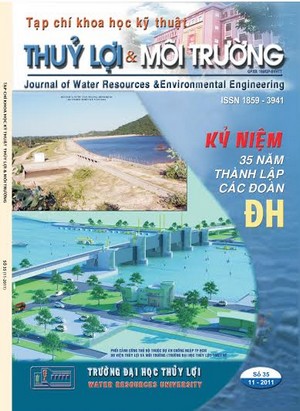Analysing and suggesting solutions to mitigate negative impacts of salt intrusion in Saigon river based on scenarios of sea level rise toward Tan Hiep water supply plant (WSP)
Abstract
In this study, MIKE 11 model has been used to simulate flow and saltwater intrusion in the dry season, particularly from February to April, in Saigon-Dongnai river basin for the shortterm (mid-2030s), medium-term (mid-2050s) and long-term (mid-2100s) scenarios using data derived from the Special Report on Emissions Scenarios B2 climate change projection. The scenarios of sea level rise have been predicted at the values of +17cm, +30cm, and +75cm, respectively. The simulated salinity intrusion results have been used to determine the negative effects of salinity on Tan Hiep water supply plant. The plant cannot be operated if the saline level at the in-take point of Hoa Phu pumping station which supply raw water for Tan Hiep WSP excesses 0.25g/l (based on Vietnamese national technical regulation on surface water quality), and then degrees of influence were determined based on the number of hours that Tan Hiep WSP could not be operated per day. Thence, the measures have been suggested for mitigating salinity levels at the in-take point of pumping station to ensure the WSP in good conditions for operation as designed capacity. For these reasons, different scenarios have been built to identify the suitable quantity of fresh water needed to be released from the Dau Tieng reservoir for pushing saline flush to downstream in the case of sea level rise and ensuring the salinity concentration at the in-take points of Hoa Phu pumping station is less than 0.25g/l. The simulation results show that the Dau Tieng reservoir should discharge the flow of 25m3 /s to overcome salt intrusion due to sea level rise +17cm and +30cm, and 30m3 /s if sea level rises +75cm.

